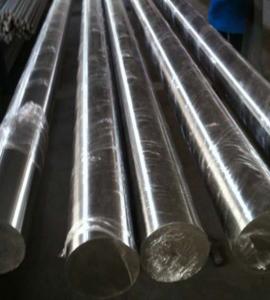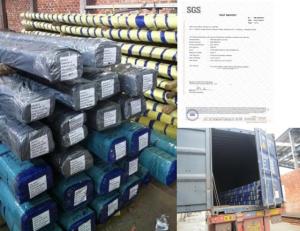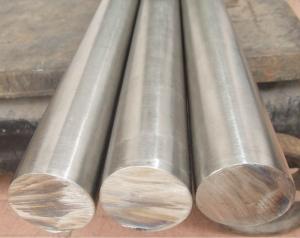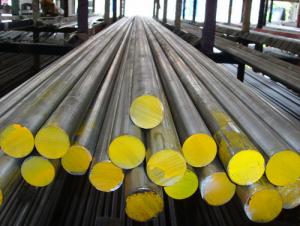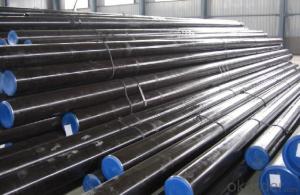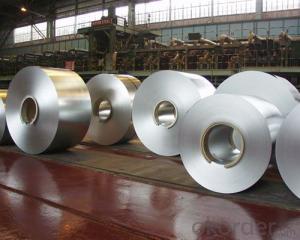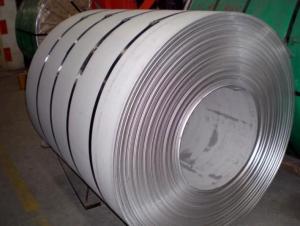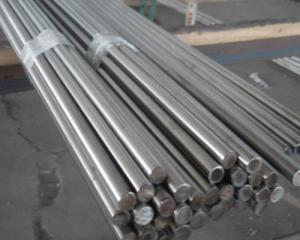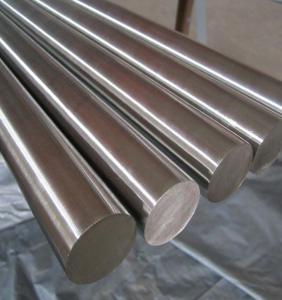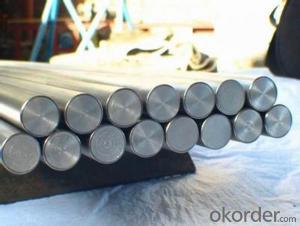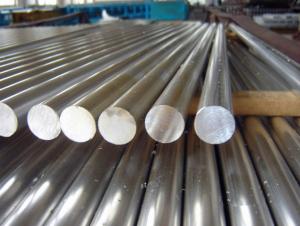1.4301 Stainless Steel Bar
- Loading Port:
- China Main Port
- Payment Terms:
- TT or LC
- Min Order Qty:
- 5 Tons m.t.
- Supply Capability:
- 1000 Tons m.t./month
OKorder Service Pledge
OKorder Financial Service
You Might Also Like
Stainless Steel Bar
Stainless Steel Round Bright Bar
Hot-rolled Stainless Steel Black Bar
Grades:201、202、301、302、303、304、316、316L、321 etc
|
Diameter (mm) |
weight (kg/m) |
Diameter (mm) |
weight (kg/m) |
Diameter (mm) |
weight (kg/m) |
Diameter (mm) |
weight (kg/m) |
|
2 |
0.025 |
14 |
1.221 |
30 |
5.607 |
50 |
15.575 |
|
3 |
0.056 |
15 |
1.402 |
32 |
6.38 |
55 |
18.846 |
|
4 |
0.1 |
16 |
1.595 |
34 |
7.202 |
60 |
22.428 |
|
5 |
0.156 |
18 |
2.019 |
35 |
7.632 |
65 |
26.322 |
|
6 |
0.224 |
19 |
2.249 |
36 |
8.074 |
70 |
30.527 |
|
7 |
0.305 |
20 |
2.492 |
38 |
8.996 |
75 |
35.044 |
|
8 |
0.399 |
22 |
3.015 |
40 |
9.968 |
80 |
39.872 |
|
9 |
0.505 |
24 |
3.588 |
42 |
10.99 |
85 |
45.012 |
|
10 |
0.623 |
25 |
3.894 |
45 |
12.616 |
90 |
50.463 |
|
11 |
0.754 |
27 |
4.542 |
46 |
13.183 |
95 |
56.226 |
|
12 |
0.897 |
28 |
4.884 |
48 |
14.354 |
100 |
62.3 |

- Q:What is the elongation of stainless steel bars?
- The elongation of stainless steel bars refers to how much the material can deform or stretch before it breaks. This measures the stainless steel's ductility or flexibility. Elongation is typically expressed as a percentage and is determined by conducting a tensile test on the stainless steel bar. During the test, a load is gradually applied to the bar until it breaks, while the increase in length is measured. The elongation value is calculated by dividing the increase in length by the original length of the bar and multiplying by 100. Stainless steel bars generally have higher elongation than other metals, making them suitable for applications that require flexibility and durability.
- Q:How do you measure the hardness of a stainless steel bar?
- The hardness of a stainless steel bar can be measured using various methods, but the most common technique is through the use of a hardness testing machine called a Rockwell hardness tester. This device applies a specific amount of force to an indenter, which is then pressed into the surface of the stainless steel bar. The depth of penetration is measured, and this value is used to determine the hardness of the material. To measure the hardness of a stainless steel bar using a Rockwell hardness tester, the following steps are typically followed: 1. Prepare the stainless steel bar by ensuring it is clean and free from any surface contaminants that may affect the test results. 2. Select the appropriate Rockwell hardness scale based on the grade and type of stainless steel being tested. Common scales used for stainless steel include Rockwell C (HRC) and Rockwell B (HRB). 3. Place the stainless steel bar on the anvil of the Rockwell hardness tester, ensuring it is securely positioned. 4. Adjust the machine to the desired test load and indenter type as specified by the hardness scale selected. For example, Rockwell C typically uses a 150 kg test load and a diamond cone-shaped indenter. 5. Activate the machine and allow the indenter to penetrate the surface of the stainless steel bar for a specific duration, usually a few seconds. 6. Once the test is complete, the machine will display the hardness value on its digital or analog readout. This value represents the resistance of the stainless steel bar to indentation and is expressed in a Rockwell hardness number (e.g., HRC 50). It is important to note that the hardness measurement obtained using a Rockwell hardness tester is not the only indicator of a stainless steel bar's properties. Other factors such as tensile strength, corrosion resistance, and metallurgical structure also contribute to its overall performance.
- Q:Are stainless steel bars suitable for the oil and gas industry?
- Yes, stainless steel bars are highly suitable for the oil and gas industry. Stainless steel has excellent corrosion resistance, high temperature strength, and durability, making it ideal for harsh environments and corrosive fluids encountered in oil and gas operations. Additionally, stainless steel bars offer enhanced mechanical properties and can withstand extreme pressure, making them a reliable choice for various applications in the industry.
- Q:Are stainless steel bars suitable for pressure vessels?
- Yes, stainless steel bars are suitable for pressure vessels. Stainless steel is known for its high strength, corrosion resistance, and durability, making it an ideal material for withstanding high-pressure environments. Additionally, stainless steel bars can be easily fabricated into various shapes and sizes, allowing for customized designs of pressure vessels.
- Q:Can stainless steel bars be used in the hospitality industry?
- Yes, stainless steel bars can be used in the hospitality industry. Stainless steel is known for its durability, resistance to corrosion, and easy maintenance, making it an ideal material for bars in hotels, restaurants, and other hospitality establishments. Stainless steel bars are not only aesthetically pleasing but also hygienic, as they can withstand frequent cleaning and disinfecting. Additionally, stainless steel's strength and versatility allow for the creation of various bar designs and configurations to suit the needs and preferences of different establishments.
- Q:Can stainless steel bars be used in nuclear applications?
- Certainly! Stainless steel bars have the capability to be employed in nuclear applications. The nuclear industry frequently relies on stainless steel due to its exceptional resistance to corrosion and impressive strength characteristics. It is commonly employed in the construction of different components, including reactor vessels, fuel cladding, storage tanks, and piping systems. By utilizing stainless steel bars, nuclear facilities can enhance structural support and stability, thus ensuring the safety and integrity of the facilities. Moreover, stainless steel's ability to withstand radiation damage and high-temperature environments makes it an optimal selection for nuclear applications.
- Q:Can stainless steel bars be bent or formed into custom shapes?
- Yes, stainless steel bars can be bent or formed into custom shapes. Stainless steel is a versatile material that can be easily manipulated through various fabrication techniques such as bending, rolling, or forging. The degree to which stainless steel bars can be bent or formed depends on factors like the grade of stainless steel, the thickness of the bars, and the specific requirements of the desired custom shape. However, it is important to note that certain grades of stainless steel may have different levels of malleability and may require specialized equipment or expertise to achieve complex custom shapes. Therefore, it is advisable to consult with a professional fabricator or engineer who can provide guidance on the feasibility and appropriate methods for bending or forming stainless steel bars into custom shapes.
- Q:What are the different grades of stainless steel for bars?
- There are several different grades of stainless steel that are commonly used for bars. The most common grades include 304, 316, and 17-4 PH stainless steel. Grade 304 stainless steel is the most widely used and versatile stainless steel grade. It is commonly used in various applications, including bars, due to its excellent corrosion resistance and formability. It contains a minimum of 18% chromium and 8% nickel, which provides good strength and durability. Grade 316 stainless steel is often referred to as "marine grade" stainless steel. It contains a higher percentage of molybdenum, which enhances its corrosion resistance, particularly against chlorides and other aggressive environments. This grade of stainless steel is commonly used in bars for applications that require superior corrosion resistance, such as in marine environments or in industries involving chemicals or saltwater exposure. Another commonly used grade for bars is 17-4 PH stainless steel. This precipitation-hardening grade offers a combination of high strength and good corrosion resistance. It is heat treatable and can be hardened to achieve various levels of strength, making it suitable for applications that require both strength and corrosion resistance, such as in aerospace or high-temperature environments. These are just a few examples of the different grades of stainless steel that are used for bars. Each grade has its unique set of properties and is chosen based on the specific requirements of the application. It is important to consider factors such as corrosion resistance, strength, formability, and cost when selecting the appropriate grade of stainless steel for bars.
- Q:Are stainless steel bars suitable for the food and beverage industry?
- Yes, stainless steel bars are highly suitable for the food and beverage industry. Stainless steel is corrosion-resistant, durable, and easy to clean, making it ideal for applications where hygiene and safety are crucial. It does not react with food or beverages, ensuring that the taste and quality of the products are maintained. Additionally, stainless steel bars can withstand high temperatures, making them suitable for various food processing and storage applications in the industry.
- Q:What are the applications of stainless steel bars in the nuclear industry?
- Stainless steel bars find various applications in the nuclear industry due to their exceptional properties. They are commonly used in the construction of nuclear reactors, fuel handling systems, and storage containers for radioactive materials. Stainless steel bars offer excellent corrosion resistance, high strength, and resistance to extreme temperatures, making them ideal for containing and transporting radioactive materials safely. Additionally, these bars are used in the fabrication of control rods, which are crucial for regulating the nuclear reactions within a reactor.
1. Manufacturer Overview |
|
|---|---|
| Location | Jiangsu, China |
| Year Established | 2010 |
| Annual Output Value | above US$8 million |
| Main Markets | East Asia, Middle East, West Europe |
| Company Certifications | |
2. Manufacturer Certificates |
|
|---|---|
| a) Certification Name | |
| Range | |
| Reference | |
| Validity Period | |
3. Manufacturer Capability |
|
|---|---|
| a)Trade Capacity | |
| Nearest Port | Shanghai |
| Export Percentage | |
| No.of Employees in Trade Department | above 50 people |
| Language Spoken: | English, Chinese, Arabic |
| b)Factory Information | |
| Factory Size: | about 15000 square meter |
| No. of Production Lines | above 4 |
| Contract Manufacturing | OEM Service Offered,Design Service Offered |
| Product Price Range | Average |
Send your message to us
1.4301 Stainless Steel Bar
- Loading Port:
- China Main Port
- Payment Terms:
- TT or LC
- Min Order Qty:
- 5 Tons m.t.
- Supply Capability:
- 1000 Tons m.t./month
OKorder Service Pledge
OKorder Financial Service
Similar products
New products
Hot products
Hot Searches
Related keywords
